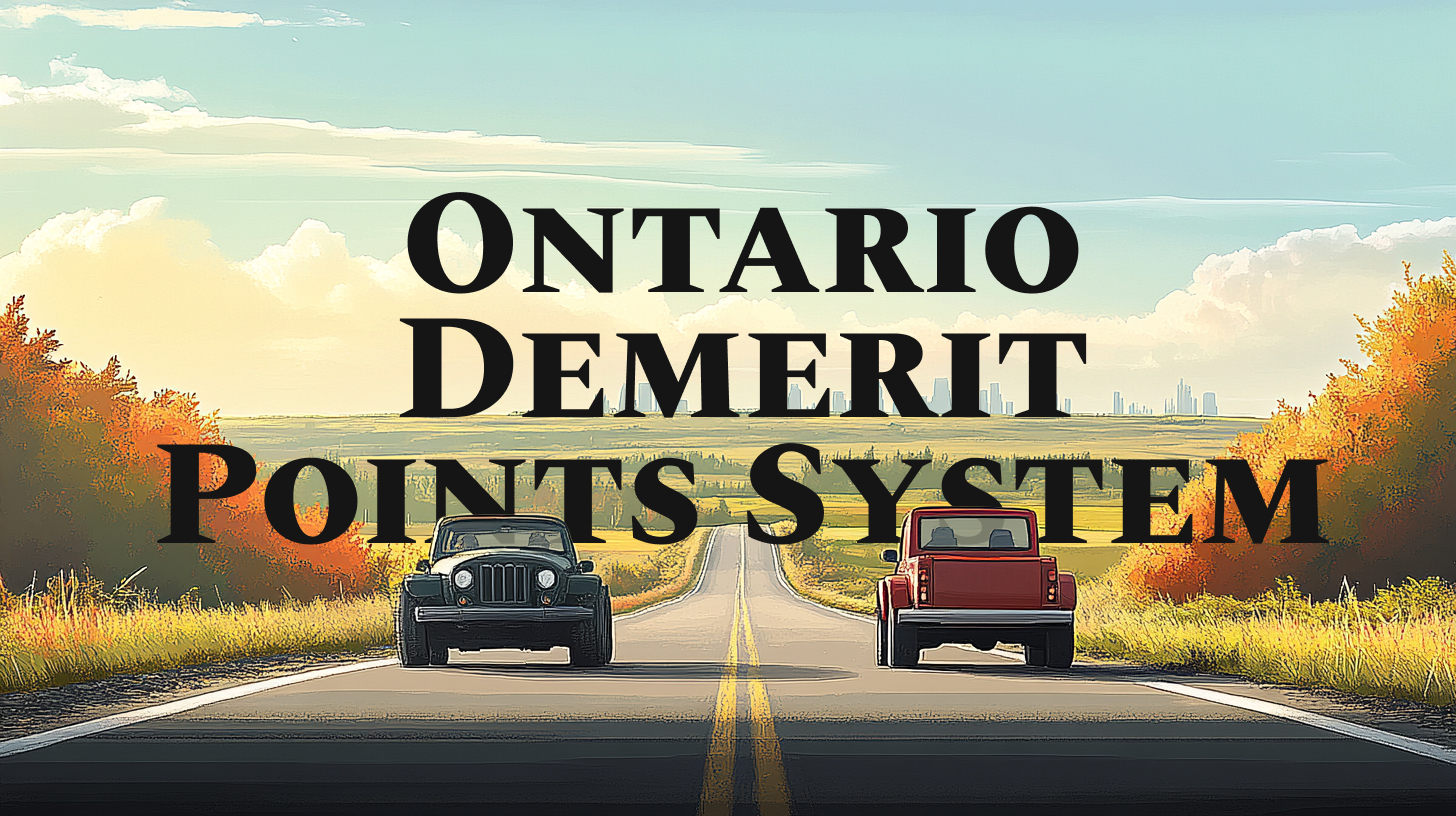
In Ontario, the demerit point system is essential for maintaining road safety. All violations of traffic laws are subject to legal punishment. Even a minor traffic offence can add demerit points to your driving record. If you accumulate enough demerit points, your licence will be suspended.
All drivers start with zero demerit points. Those who obey the law and follow road rules will not see this number increase. However, multiple violations can result in a licence suspension due to the accumulated number of demerit points.
Each infraction carries a different demerit point value based on its severity. For example, you’ll get more points for careless driving than for failing to signal a lane change. This system classifies traffic violations into three categories: minor, moderate and major infractions.
Typically, minor infractions involve less severe violations of traffic laws. Minor infractions will result in a lower number of demerit points, but they can accumulate over time and lead to significant penalties if repeated frequently. Some of the most common minor infractions are:
When the severity of an infraction increases, so does the penalty. Speeding is a more serious issue that will be punished with more demerit points, depending on the exceeded limit. Some moderate infractions include:
When drivers are a great risk to road safety, they face serious penalties. Such offences result in the highest number of demerit points, fines, licence suspensions and even vehicle impoundment. The most serious traffic violations are:
The two most serious (7-point) violations listed here, leaving the scene after a collision and failing to stop when signalled by a police officer, are also criminal offences under both Ontario law and the Criminal Code. If either violation is prosecuted as an indictable offence and the driver is convicted, the driver can be sentenced to up to 10 years in prison.
There are some severe traffic offences, such as driving while impaired by alcohol or drugs, that carry no demerit points. These offences are criminal offences under the Criminal Code and typically carry heavy penalties, including mandatory imprisonment for a second or subsequent offence, in addition to any penalties (such as automatic licence suspension) imposed under Ontario law.
Drivers need to know the consequences of breaking the law, and that’s why the G1 written exam features questions related to this topic.
Ensure that you have fully memorized the Ontario demerit points system by taking a fines, limits and demerit points practice test. It contains 40 questions and it would be ideal to have all the answers memorised.
The number of demerit points you can accumulate before your licence is suspended depends on your level of driving experience. For a full G licence, you can accumulate up to 15 points in total before your licence is automatically suspended.
The Ministry of Transportation will send a letter to all drivers before they exceed 8 demerit points, which serves as a warning sign.
Drivers with 9 to 14 points may be required to attend an interview to explain their driving behaviour. Keep in mind that you’ll have to pay a $50 fee for this meeting, and failure to attend can result in the suspension of your licence.
Once you accumulate 15 demerit points, your licence will be immediately suspended for the next 30 days. Upon reinstatement, any additional infractions could result in extended suspension periods.
These restrictions also apply to the M licence, which has its own set of regulations for motorcycle riders. There’s an M1 motorcycle fines and limits test you can use to refresh your knowledge since it’s always better to be aware of what happens when you’re breaking the rules.
Beginners often make mistakes, as driving is a skill that can only be improved with practice. Therefore, those who have a G1, G2, M1 or M2 licence are subject to stricter regulations.
For these licences, a warning letter is issued between 2 and 5 demerit points and an invitation to an explanatory interview can be expected as soon as you reach 6 points.
When a student driver has 9 demerit points in total, their licence will be automatically suspended for 60 days. If more points are accumulated after reinstatement, the following suspension period can extend to six months.